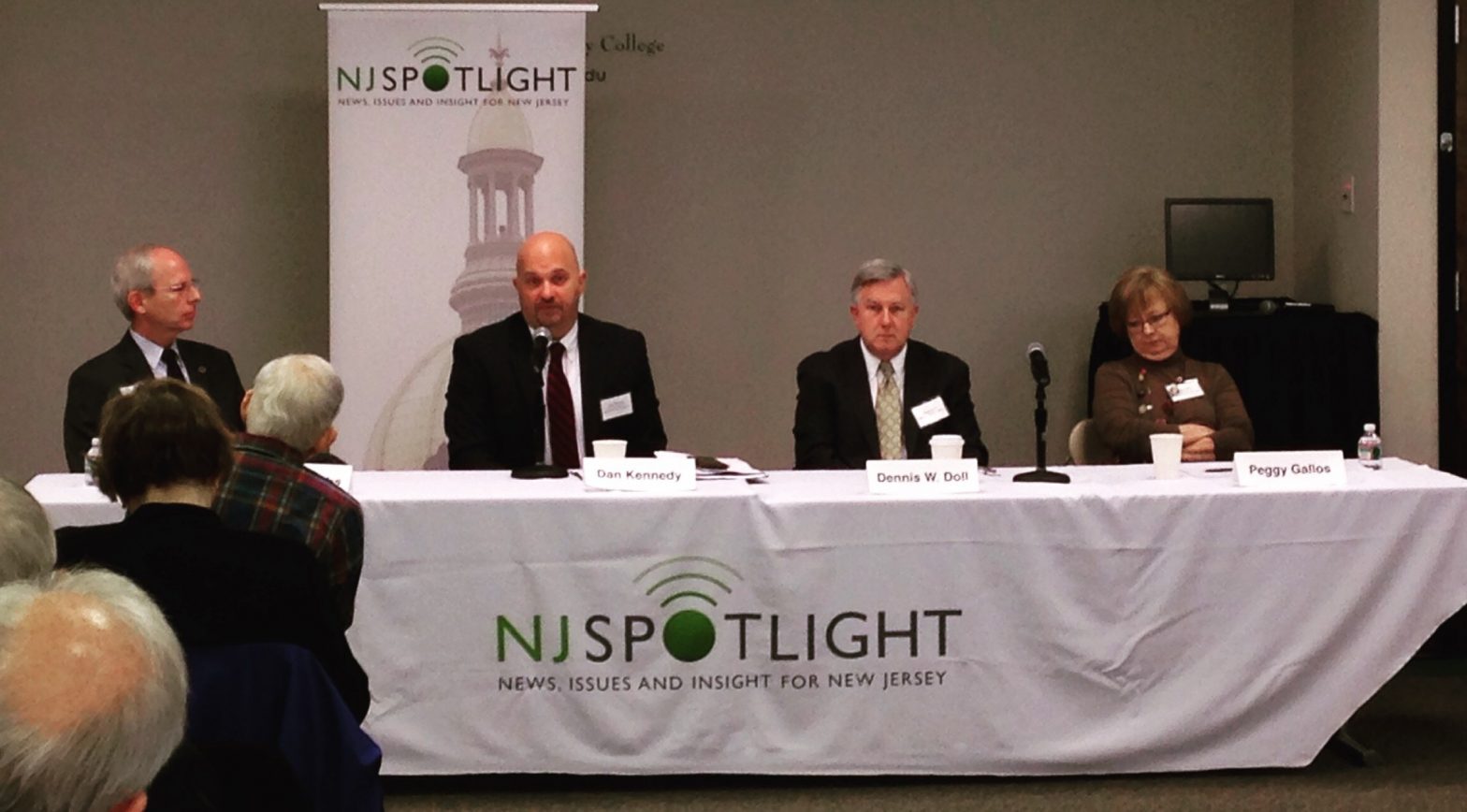
Lead in water in public schools. Potentially harmful contaminants found in drinking water, without suitable standards to act on. An aging infrastructure leaking water before it ever gets to consumers.
There is no shortage of issues facing policymakers charged with overseeing proper management of New Jersey’s drinking water, but in this age of information, maybe the biggest concerns have to do with what we do not know, according a panel at a NJ Spotlight roundtable on “New Jersey’s Hidden Water Crisis.”
“I would suggest if there is a crisis in our water infrastructure, the crisis is in our lack of knowledge,’’ said Daniel Van Abs, an associate professor at the Rutgers University School of Environmental and Biological Sciences. “We lack consensus standards on how good or bad our systems are.’’
Ironically, Van Abs, and Daniel Kennedy, an assistant commissioner of the state Department of Environmental Protection, agreed that many larger systems do have a good inventory of their infrastructure, including how many miles of pipe they have underground and their status. But most of that information is not shared with the state, Van Abs noted. (Van Abs is a regular contributor to NJ Spotlight.)
“There clearly are smaller water and wastewater systems that are facing significant challenges and issues,’’ conceded Kennedy, who said they need sufficient investment to overcome those challenges. Kennedy is also involved in the process of testing and identifying New Jersey schools with lead in their water.
The state tries to address that need by handing out low-interest loans totaling $200 million to $500 million a year, Kennedy said. “We want to be smart how we spend the money because the resources are very thin.’’
Too often, those challenges and the current state of the water infrastructure in New Jersey is not fairly portrayed, said Dennis Doll, chairman, president, and CEO of Middlesex Water Company, an investor-owned water utility.
Acknowledging there are many smaller, troubled systems, Doll argued “many older systems are very well run and absolutely adequately maintained. We need to focus on those systems that truly need significant improvement and not characterize the state’s infrastructure as being in crisis.’’
Investor-owned utilities also ought to be able to take advantage of the state’s water infrastructure loan program, administered by the New Jersey Environmental Trust, Doll said.
Peggy Gallos, executive director of the Association of Environmental Authorities, a trade organization representing wastewater and other public agencies, noted many have invested significantly to make their systems more resilient and to protect water quality.
Even so, various studies have pointed out the huge amounts the state needs to invest in those systems. A needs assessment done by the federal Environmental Protection Agency projected that wastewater upgrades in the state will approach $17 billion. A separate analysis assessed drinking-water needs at $8 billion statewide.
Those projects almost surely are under actual costs, according to Van Abs. “They are based on documented costs,’’ he said. “By their very nature, they can’t include what we don’t know so all those costs are underestimates.’’
For the most part, the integrity of the state’s water infrastructure has been assumed based on meeting the few standards dealing with the status of those systems now in place, he argued. “We know now that really isn’t sufficient. Until we know where we are, we are quite hampered in how we move forward.’’
Touching on another area of mounting concern, Kennedy said that even though a draft water supply master plan has yet to be made public, the DEP has published online data from the report and is using that information in making permit decisions and determining what are safe yields in water withdrawals.
The plan has not been updated for two decades with the last revisions occurring in 1996, leading to much criticism from conservation groups as to when the document will be made available. The draft plan has been sitting in the governor’s office for more than a year, according to water-supply advocates.
Kennedy also said the state agency is focusing on dealing with a range of contaminants found in drinking water, including PFCs (perfluorinated compounds), chemicals used in nonstick cookware and stain-resistant fabrics. They are not currently regulated either by the state or the federal government.
